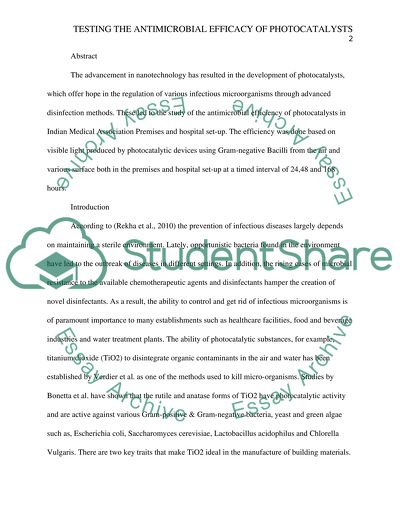Cite this document
(“Antimicrobial Efficacy of Photocatalysts in Indian Medical Association Research Paper”, n.d.)
Antimicrobial Efficacy of Photocatalysts in Indian Medical Association Research Paper. Retrieved from https://studentshare.org/medical-science/1686705-multicentric-study-done-by-indian-medical-association-to-test-the-antimicrobial-efficacy-of-photocatalysts
Antimicrobial Efficacy of Photocatalysts in Indian Medical Association Research Paper. Retrieved from https://studentshare.org/medical-science/1686705-multicentric-study-done-by-indian-medical-association-to-test-the-antimicrobial-efficacy-of-photocatalysts
(Antimicrobial Efficacy of Photocatalysts in Indian Medical Association Research Paper)
Antimicrobial Efficacy of Photocatalysts in Indian Medical Association Research Paper. https://studentshare.org/medical-science/1686705-multicentric-study-done-by-indian-medical-association-to-test-the-antimicrobial-efficacy-of-photocatalysts.
Antimicrobial Efficacy of Photocatalysts in Indian Medical Association Research Paper. https://studentshare.org/medical-science/1686705-multicentric-study-done-by-indian-medical-association-to-test-the-antimicrobial-efficacy-of-photocatalysts.
“Antimicrobial Efficacy of Photocatalysts in Indian Medical Association Research Paper”, n.d. https://studentshare.org/medical-science/1686705-multicentric-study-done-by-indian-medical-association-to-test-the-antimicrobial-efficacy-of-photocatalysts.


